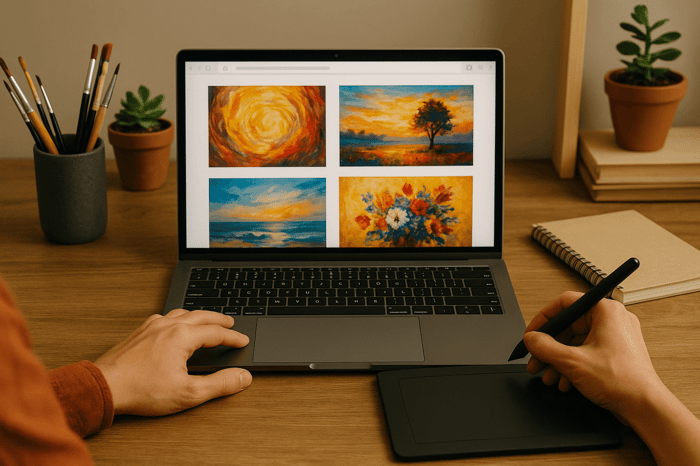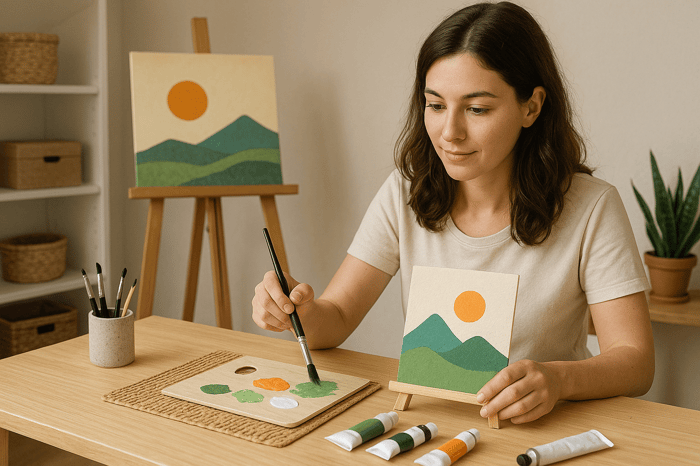How to Sell More Art Online: 7 Proven Strategies for Artists
Turning your passion for art into a profitable business is no longer limited to galleries and art fairs. In today’s digital world, thousands of artists are successfully selling their work online, connecting with collectors around the globe, and building thriving creative careers. Whether you're a painter, illustrator, or sculptor, learning how to sell more art online can transform your hobby into a sustainable source of income. Below are seven time-tested strategies to help you increase your online art sales and grow your presence in the digital marketplace.
1. Build a Stunning Online Portfolio Website
Your website is your online gallery — the first impression many collectors will have of your work. Invest time and effort into creating a clean, professional, and mobile-friendly website that reflects your artistic style. Make sure to include:
- High-quality images of your artwork
- Detailed descriptions and prices
- An artist biography or story
- A contact form and clear navigation
- Links to your social media profiles
Use keywords like "buy contemporary paintings online" or "modern sculpture for sale" throughout your website to help your pages rank in search results.
2. Leverage Online Art Marketplaces
Online marketplaces like Etsy, Saatchi Art, Artfinder, and Redbubble provide a built-in audience of art buyers. These platforms are a great way to get started if you don’t have a website yet, or to diversify your revenue streams.
Optimize your listings by using strategic keywords, writing compelling descriptions, and uploading crisp, clear photos. Research what similar artists are doing, and aim to stand out with your unique style and branding. Take advantage of each platform’s promotional tools and engage with your buyers to build trust and loyalty.
3. Promote Your Art Consistently on Social Media
Social media isn’t just for sharing — it’s a vital tool for marketing your art. Platforms like Instagram, Pinterest, Facebook, and even TikTok offer powerful exposure, especially for visual artists. Here’s how to make the most of them:
- Post regularly with consistent branding
- Use hashtags such as #artforsale, #supportartists, and #[yourmedium]art
- Share behind-the-scenes videos and process reels
- Engage with followers and art communities
Remember, people buy from those they trust. Share your story, your studio life, and your creative process to build real connections with potential collectors.
4. Start and Grow an Email Newsletter
Email marketing is still one of the most effective ways to nurture an audience and drive sales. Unlike social media, your email list is something you own — and it’s often where the most loyal fans reside. Here’s how to build and use your list effectively:
- Offer a freebie (like a downloadable print or wallpaper) in exchange for email signups
- Send updates about new collections, limited-time sales, or upcoming exhibitions
- Include personal stories and insights to keep readers engaged
Aim to send newsletters at least once a month to stay top of mind without overwhelming your subscribers.
5. Master SEO as an Artist
Search engine optimization (SEO) is crucial for being found online. Artists who understand SEO can attract more organic traffic to their websites without paying for ads. Start with these key steps:
- Research keywords collectors are searching for (e.g., “original oil paintings,” “custom pet portraits”)
- Incorporate those keywords naturally into your page titles, meta descriptions, headings, and image alt text
- Create blog posts that answer common collector questions like “How to commission artwork?”
- Use internal linking to guide visitors to related artworks or contact pages
Consistent content updates and thoughtful keyword use will help improve your search rankings and attract more qualified buyers.
6. Sell Limited Editions and Custom Commissions
Creating urgency is a powerful way to boost online sales. Limited edition prints or time-sensitive commission slots can spark interest and action. Consider:
- Announcing “only 10 prints available” of a popular piece
- Opening custom commissions just 2–3 times a year
- Bundling artwork with exclusive bonuses like signed certificates or behind-the-scenes sketches
Promote these opportunities across your email list and social platforms. Collectors love feeling like they’re part of something exclusive and special.
7. Analyze Performance and Adapt Your Strategy
What gets measured gets improved. Use tools like Google Analytics, Meta Insights, and Shopify Analytics to understand what’s driving traffic and sales. Key metrics to monitor include:
- Website traffic sources
- Top-performing art pieces
- Conversion rates (visitors who buy)
- Email open and click-through rates
Let data guide your strategy. If a particular blog post brings in high traffic, write more on that topic. If a style of art sells faster, create more of it. Online success is all about learning, testing, and iterating.
Final Thoughts: Sell Your Art with Purpose and Passion
Successfully selling art online isn’t about gimmicks or quick hacks — it’s about building relationships, showing up consistently, and communicating the value of your work. By applying these strategies, you’re not just increasing sales — you're growing a sustainable art business built on passion and purpose.
Looking for more support? Join our Art Sellers Mastermind Hub, an artist community designed to help creatives like you grow and thrive online.
Start Your Journey Now With A One-Time Payment of $199
If you're ready to commit fully and start transforming your passion into profit without delay, our one-time payment option gives you full access immediately. Perfect for those who want to dive right in and take full control of their artistic destiny.
$199.00 — Discounted Price
Get Started Now



